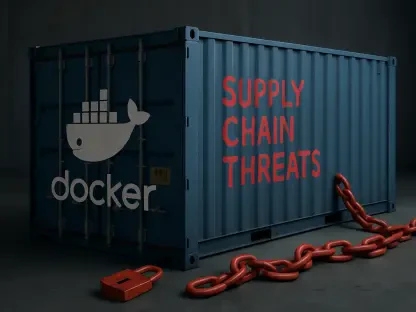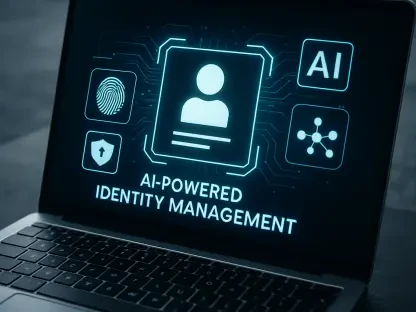In an era marked by relentless cyber threats, organizations globally grapple with the challenge of safeguarding their digital assets. Traditional cybersecurity measures, built on outdated trust assumptions, are increasingly failing in the face of sophisticated cyberattacks. At the forefront of modern security solutions is zero trust architecture, a groundbreaking model poised to redefine cybersecurity practices, promising significant risk mitigation and cost savings worldwide.
Contextual Shifts Propelling the Zero Trust Model
Historically, cybersecurity strategies centered around protecting network perimeters, a once-effective method that now shows its limitations as cyber threats evolve. The surge in ransomware incidents, specifically a 126% increase, illustrates the inadequacy of outdated tools like firewalls and VPNs. Zero trust, replacing implicit trust with verification at every access point, ensures enhanced security, making it crucial for modern organizational frameworks.
Detailed Market Trends and Projections
Industry-Specific Impacts and Financial Implications
Zero trust’s influence varies across industries, demonstrating its versatility and wide applicability. A study indicates large enterprises—particularly those in construction, wholesale trade, information, and manufacturing—stand to gain significantly from its implementation. These sectors could prevent nearly a third of cyber incidents, translating to potential savings of $465 billion annually. In contrast, finance, insurance, mining, oil and gas, and utilities may experience lesser gains yet still manage to avert one in five cyber threats.
Regional Adoption Variances and Implementation Insights
From a regional perspective, the adoption and efficacy of zero trust architecture differ considerably. European companies are expected to prevent roughly 41% of cyber incidents compared to North America’s 31%. Such regional disparities underscore the necessity of tailored implementation strategies that consider local threat landscapes and technological priorities. Adoption trends illustrate a global inclination towards zero trust principles, signaling its pivotal role in future cybersecurity strategies.
Overcoming Operational Challenges and Misguided Perceptions
Implementing zero trust across complex environments remains challenging. Many firms initially perceive this architecture as complex and resource-intensive, creating barriers to its widespread adoption. However, success stories highlight that overcoming these hurdles—through comprehensive planning and targeted strategies—can unleash zero trust’s full capabilities, enhancing an organization’s resilience and security posture. Organizations gradually recognize its benefits, with more than half now integrating zero trust at some level.
Strategic Insights for Future Directions
The path forward for zero trust involves continuous evolution and adaptation. Incorporating artificial intelligence and machine learning could enhance predictive capabilities, tailoring responses to emerging threats quickly and efficiently. Regulatory incentives could further drive adoption, embedding zero trust within standard practice frameworks. Industry leaders anticipate a shift toward decentralized cyber defense methodologies, with zero trust leading the way to greater operational security.
Reflecting on Key Takeaways and Strategic Recommendations
Reflecting on these analyses, organizations that invested in zero trust cybersecurity practices witnessed notable risk reductions and cost savings. As cybersecurity threats continue to rise, zero trust proved instrumental in refreshing cyber defense tactics. Recommendations for businesses include fostering a culture oriented towards security awareness, integrating innovative identity management tools, and selecting adaptable, scalable solutions to future-proof defenses. Ultimately, prioritizing zero trust implementation not only fortifies digital infrastructures but also positions organizations to thrive within an increasingly precarious digital landscape.









